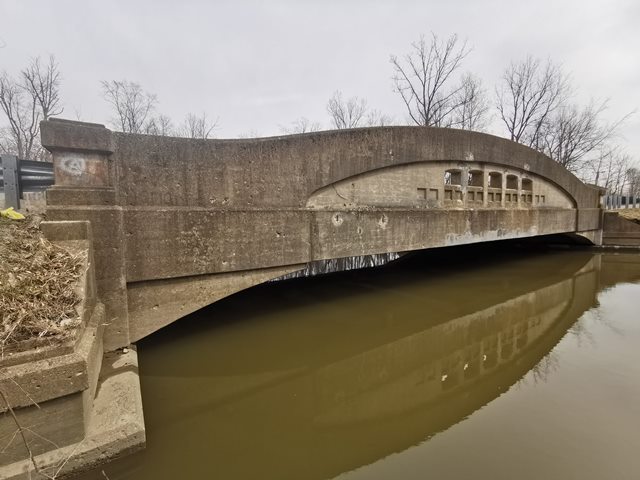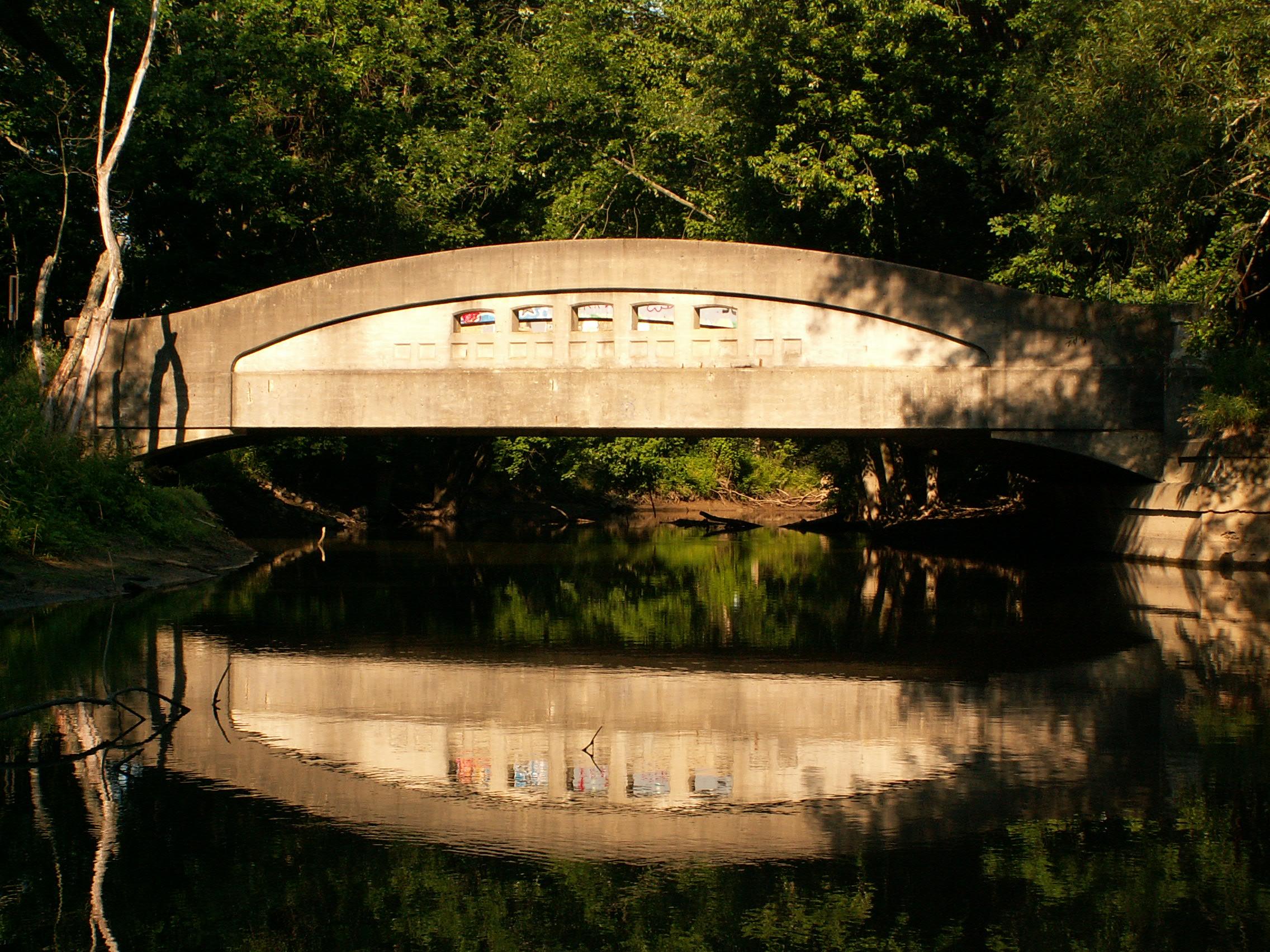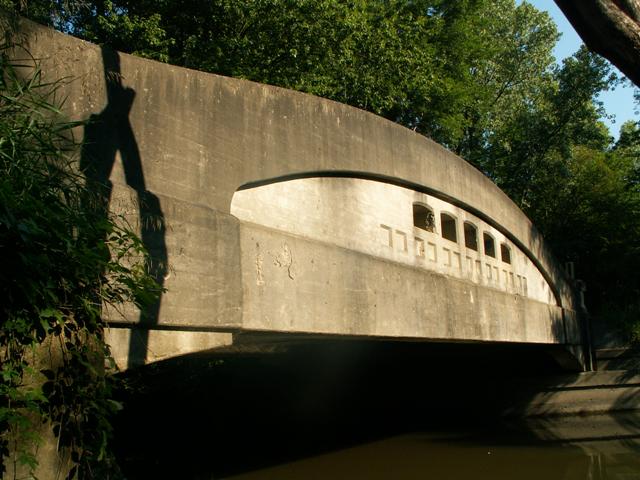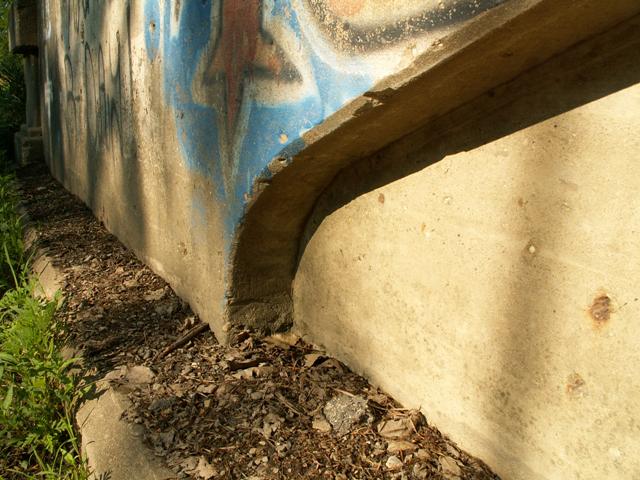We Recommend:
Bach Steel - Experts at historic truss bridge restoration.
BridgeHunter.com Phase 1 is released to the public! - Visit Now
Silverwood Road Bridge

Primary Photographer(s): Nathan Holth
Bridge Documented: July 6, 2007 and April 2, 2022
Rural: Lapeer County, Michigan: United States
1928 By Builder/Contractor: Unknown and Engineer/Design: Michigan State Highway Department
Not Available or Not Applicable
70.0 Feet (21.3 Meters)
75.0 Feet (22.9 Meters)
22 Feet (6.71 Meters)
1 Main Span(s)
44200051000B010

View Information About HSR Ratings
Bridge Documentation
View Archived National Bridge Inventory Report - Has Additional Details and Evaluation
Learn about Michigan's Unique Concrete Camelback Bridges
The Silverwood Road Bridge is the last remaining bridge of its type in Lapeer County, and one of the last in the entire greater thumb area of Michigan. It is significant on a local and national scale. For its age, and with no evidence of noteworthy maintenance, it is in very good structural condition, with remarkably little evidence of spalling or cracking. As a 75 Foot structure, this is a mid-size concrete camelback. The standard plans that C. V. Dewart designed featured specifications for bridges of varying lengths. The different lengths featured different girder sizes, and even significant differences between the architectural expression on the bridges. As such, from a preservation perspective, it is important that a variety of concrete girder bridge sizes be preserved, to create a permanent, living history of these different designs. At 75 feet, the Silverwood Road Bridge is large enough that it includes the taller girder design that features pieced openings, but does not feature the taller girders found in the 90 foot concrete camelback bridges. Very few, if any, examples of these mid-size concrete camelbacks remain, making this bridge even more significant and important to preserve. Adding to its significance is its skewed configuration. As such, it is essential that this bridge be restored to ensure that this beautiful, historic landmark remains in place for future generations to enjoy.
Lapeer County once had one of the rarest bridges in Michigan, the unique Genesee Road Bridge, which was, like the Silverwood Road Bridge, a concrete camelback bridge, but was unique for its three-span configuration and function as a railroad grade separation. Lapeer County demolished it, even though it was the last remaining example of its kind in Michigan, and likely the nation.
Curved chord through girder bridges, also known as concrete camelback bridges, have not faired much better in since the demolition of the Genesee Road Bridge. Much like metal truss bridges, public awareness of the importance of these graceful arch-shaped bridges is minimal. These bridges are in fact a rare structure type that was designed by C. V. Dewart for the Michigan State Highway Department as a standard plan for agencies to make use of. With perhaps only a handful of exceptions, these bridges were only built in Michigan, making each surviving example very significant, even on a national scale. Despite this, they continue to be demolished, and those that are not demolished have mostly not been maintained, and have continued to deteriorate. As a structure type, the bridges are extremely durable. Even without maintenance, these bridges may develop concrete spalling, but still may have no posted weight limit. These bridges can be so durable in fact, that when the Wadhams Road Bridge was demolished, the deck... and only the deck.. was able to support a full-size backhoe even though the girders were gone, and the deck was no longer connected at the far end!
The Silverwood Road Bridge does have a posted weight limit, but this may be more of a precautionary measure rather than a reflection of the bridge's condition. The weight limit is not very restrictive, having a posted 18-36-63 ton weight limit, depending on number of axels. Unrestricted bridges in Michigan must support up to 77 tons for the large trucks, so the 63 ton weight limit is not very far below the legal maximum. It is also worth noting that in other states such as Indiana, 40 tons is the legal maximum, which is more reasonable for bridges on roads such as Silverwood Road, which in reality should not be seeing those heavy trucks anyway.
Given the good condition of this bridge, it should not be costly to rehabilitate this bridge for continued vehicular use. Indeed, it would likely cost far less to rehabilitate this bridge now than to demolish and replacement. Michigan's concrete girder bridges are so massive they could almost be considered overbuilt. Given this, if properly maintained, the structure would likely continue to be fully functional for decades to come. Rehabilitating the Silverwood Road Bridge is important to preserve this beautiful historic landmark, and would also be a wise and efficient use of taxpayer dollars.
The above discussion was written in 2007. A revisit in 2022 found the bridge in similar condition, with the positive development of some minor concrete repairs having been completed recently to the bridge. The above photo was taken in 2022, and the below photo was taken in 2007.

2010 National Bridge Inventory Structural EvaluationDeck Condition: Fair ConditionSuperstructure Condition: Good Condition Substructure Condition: Satisfactory Condition Scour: Scour evaluation has not been made Bridge Railing: Meets currently acceptable standards. Structural Evaluation: Meets minimum tolerable limits to be left in place as is. Water Adequacy Evaluation: Equal to present desirable criteria Deck Geometry: Meets minimum tolerable limits to be left in place as is. Bridge is NOT Listed As Structurally Deficient. Note: Conditions can range from Failed, Imminent Failure, Critical, Serious, Poor, Fair, Satisfactory, Good, Very Good, and Excellent. |
This bridge is tagged with the following special condition(s): Unorganized Photos
![]()
Photo Galleries and Videos: Silverwood Road Bridge
Original / Full Size Gallery
Original / Full Size PhotosFor the best visual immersion and full detail, or for use as a desktop background, this gallery presents selected overview and detail photos for this bridge in the original digital camera resolution. This gallery offers photos in the highest available resolution and file size in a touch-friendly popup viewer.
Alternatively, Browse Without Using Viewer
![]()
Structure Overview
Mobile Optimized PhotosA collection of overview photos that show the bridge as a whole and general areas of the bridge. This gallery features data-friendly, fast-loading photos in a touch-friendly popup viewer.
Alternatively, Browse Without Using Viewer
![]()
Structure Details
Mobile Optimized PhotosA collection of detail photos that document the parts, construction, and condition of the bridge. This gallery features data-friendly, fast-loading photos in a touch-friendly popup viewer.
Alternatively, Browse Without Using Viewer
![]()
Additional Unorganized Photos
Original / Full Size PhotosA supplemental collection of photos that are from additional visit(s) to the bridge and have not been organized or captioned. This gallery offers photos in the highest available resolution and file size in a touch-friendly popup viewer.
Alternatively, Browse Without Using Viewer
![]()
Additional Unorganized Photos
Mobile Optimized PhotosA supplemental collection of photos that are from additional visit(s) to the bridge and have not been organized or captioned. This gallery features data-friendly, fast-loading photos in a touch-friendly popup viewer.
Alternatively, Browse Without Using Viewer
![]()
Maps and Links: Silverwood Road Bridge
Coordinates (Latitude, Longitude):
Search For Additional Bridge Listings:
Bridgehunter.com: View listed bridges within 0.5 miles (0.8 kilometers) of this bridge.
Bridgehunter.com: View listed bridges within 10 miles (16 kilometers) of this bridge.
Additional Maps:
Google Streetview (If Available)
GeoHack (Additional Links and Coordinates)
Apple Maps (Via DuckDuckGo Search)
Apple Maps (Apple devices only)
Android: Open Location In Your Map or GPS App
Flickr Gallery (Find Nearby Photos)
Wikimedia Commons (Find Nearby Photos)
Directions Via Sygic For Android
Directions Via Sygic For iOS and Android Dolphin Browser
USGS National Map (United States Only)
Historical USGS Topo Maps (United States Only)
Historic Aerials (United States Only)
CalTopo Maps (United States Only)




